Momentum is just one component of Metro’s vision for the future of transit in the Washington region.
We know that there are many questions about the relationship between Momentum, Metro’s strategic plan, and ConnectGreaterWashington, Metro’s long-range Regional Transit System Plan. These are two really ambitious, visionary plans that put forth a vision both for the Authority itself, as well as the transit map of the future. So below is a handy reference guide that compares the two plans across a variety of factors. This FAQ is a work in progress, so please add questions below and we will modify the table with other key details.
|
Momentum
|
ConnectGreater
Washington
|
|

|

|
| Purpose |
- Develop actions that Metro can take to meet the mission, vision and goals adopted by WMATA’s Board.
- Identify key infrastructure initiatives, defined as Metro 2025, that Metro can implement to maximize the existing system without expanding it.
|
- Develop the future transit map that the region needs to meet its projected population and employment growth.
- Note the plan is being developed without specific operators in mind, especially for the high capacity surface transit corridors. However, a subset of the overall plan will come under Metro’s purview, build on Metro 2025, and ultimately become Metro 2040.
Read more… |
This is the second post in a two-part series based  on content from the tenth meeting with the Regional Transit System Plan (RTSP) Technical Advisory Group (TAG) that was held in July. The first post focused on our analysis of new Metrorail lines in the core and Virginia. This post is about our approach to identify regionally significant corridors for high capacity transit.
on content from the tenth meeting with the Regional Transit System Plan (RTSP) Technical Advisory Group (TAG) that was held in July. The first post focused on our analysis of new Metrorail lines in the core and Virginia. This post is about our approach to identify regionally significant corridors for high capacity transit.
By 2040, multiple regionally significant travel corridors will need high capacity, high frequency transit to connect people and jobs outside of the core.
As part of the RTSP, we will identify regionally significant corridors where transit priority infrastructure is needed to provide high capacity transit. At the TAG meeting, Metro Planning staff presented a methodology to identify, evaluate, and prioritize these regionally significant corridors. The methodology has evolved since the July meeting and is described below. The actual evaluation and prioritization is still in process.
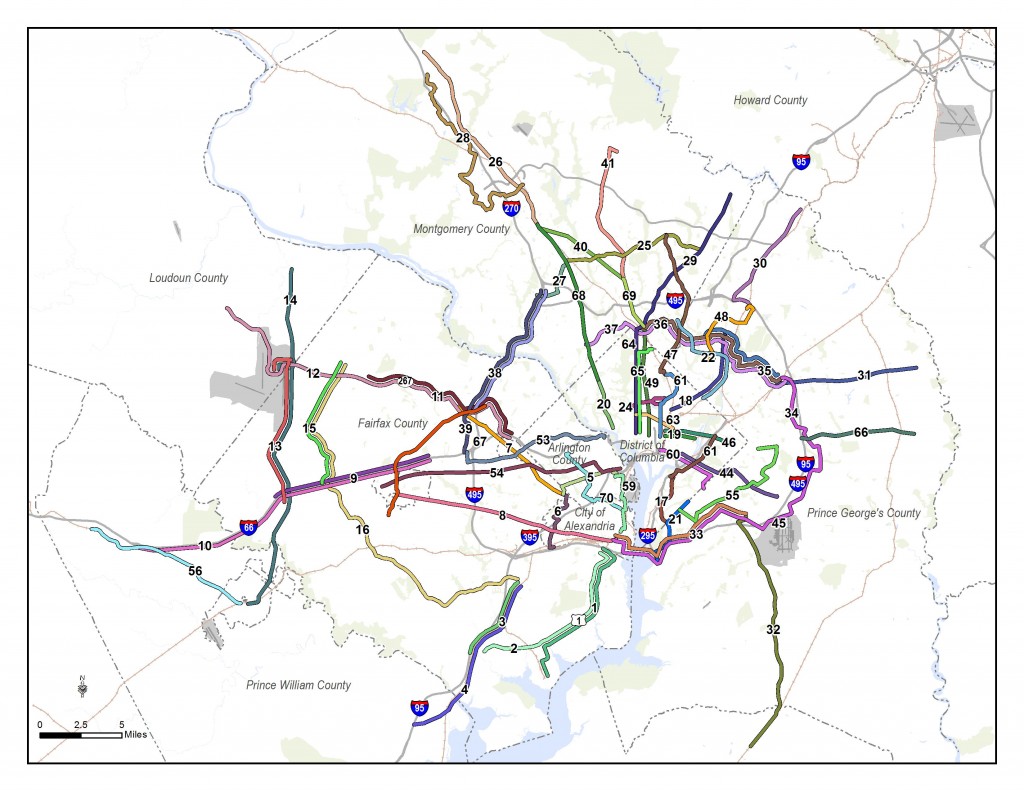
Corridors identified for evaluation for high capacity transit.
Since the TAG meeting, we have also conducted one-on-one meetings with each jurisdiction and agency in the RTSP study area to review and gather feedback on the full set of corridors that will be evaluated. Approximately 70 corridors have been identified from:
Read more…
This is the first post in a two-part series based  on content from the tenth meeting with the Regional Transit System Plan (RTSP) Technical Advisory Group (TAG) that was held in July. This post will focus on our analysis of Metrorail capacity and crowding, while the second post will focus on identifying and prioritizing regionally significant surface transit corridors.
on content from the tenth meeting with the Regional Transit System Plan (RTSP) Technical Advisory Group (TAG) that was held in July. This post will focus on our analysis of Metrorail capacity and crowding, while the second post will focus on identifying and prioritizing regionally significant surface transit corridors.
By 2040, ridership and crowding levels on Metrorail indicate the need for a new Blue Line and new Yellow line in the system’s core and a third line in Virginia.
At the time of our last post, we had run an initial round of four scenarios that sought to resolve regional mobility issues. We gathered a lot of information from the results, but realized that we needed to run a second round of scenarios focused almost entirely on Metrorail. Using MWCOG’s Cooperative Forecast Round 8.1 land use, which has been adopted by the region, and MWCOG’s Aspirations land use, which shifts more jobs and households into the regional activity centers, the maps below clearly demonstrate crowded conditions in 2040. The Base Network shown in these maps includes 100 percent eight-car trains and all the CLRP projects. Crowded conditions exist on the Orange Line west of Rosslyn, on the Yellow and Green Lines south of L’Enfant Plaza, and on the Silver Line west of Tysons. Because the results indicated that Metro would be severely crowded EVEN if we run the longest possible trains (eight-car trains), we wanted to explore other long-term solutions.
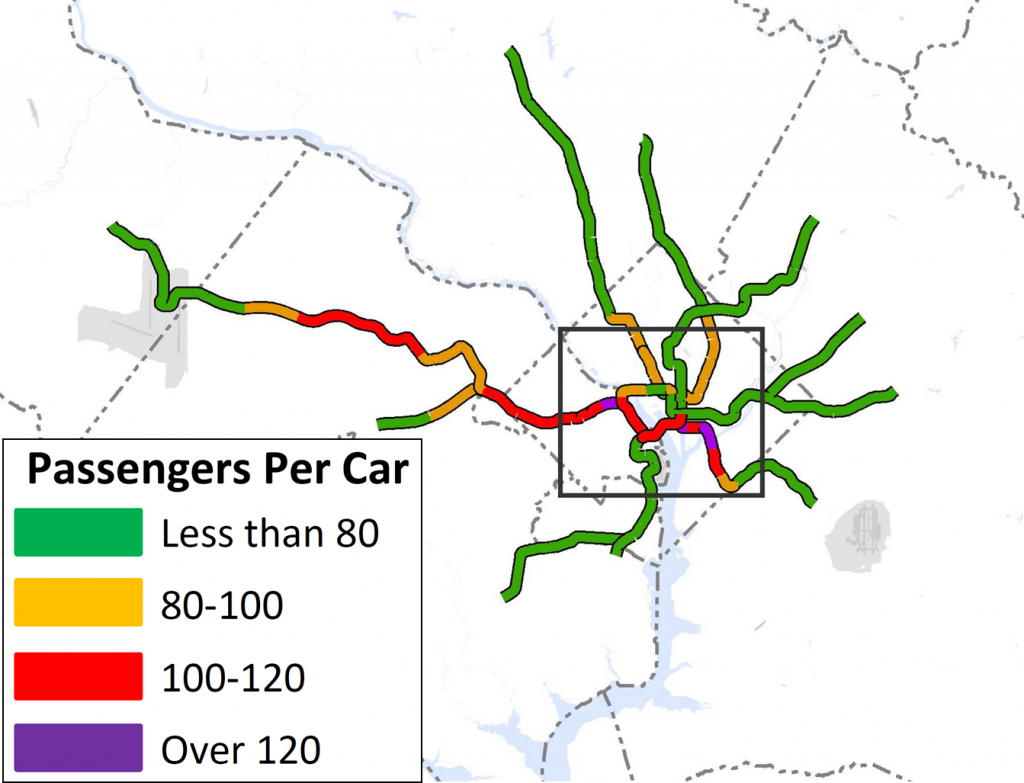
Crowding on Metrorail by 2040, even with the longest possible (eight-car) trains. Base Network AM Peak, Round 8.1 Cooperative Forecast
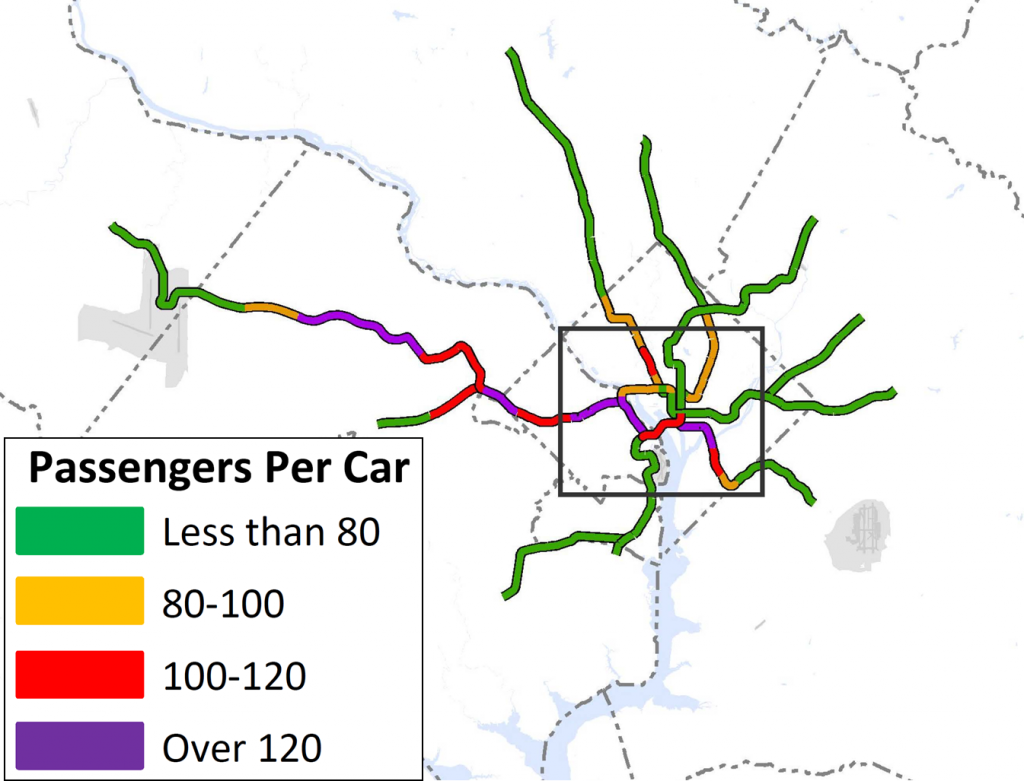
Crowding on Metrorail in 2040 even with the longest possible (eight-car) trains, Base Network AM Peak, Aspirations Land Use
Read more…
Now that Momentum has been adopted 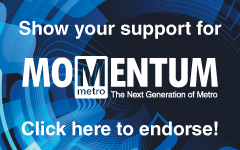 by Metro’s Board of Directors, what’s next? How can the region ensure that the plan is implemented? What is Metro doing internally to make sure the organization is on track? What can you do to help?
by Metro’s Board of Directors, what’s next? How can the region ensure that the plan is implemented? What is Metro doing internally to make sure the organization is on track? What can you do to help?
Board members and members of Metro’s Executive Leadership Team have been meeting with local officials, businesses, civic organizations, and other stakeholders throughout the course of the plan’s development. Their support of the plan is critical to its implementation. This outreach will continue in order to ensure that the region’s leaders are aware of the plan, the benefits of its implementation, and the cost of doing nothing. This outreach is intended to garner a wide array of support, similar to what was obtained at other key points during Metro’s history. Many area businesses and organizations, from AAA to Zipcar, and a growing list of private citizens have already endorsed the plan. If you haven’t done so already, please endorse Momentum online now. Read more…
Delivering the transit system that 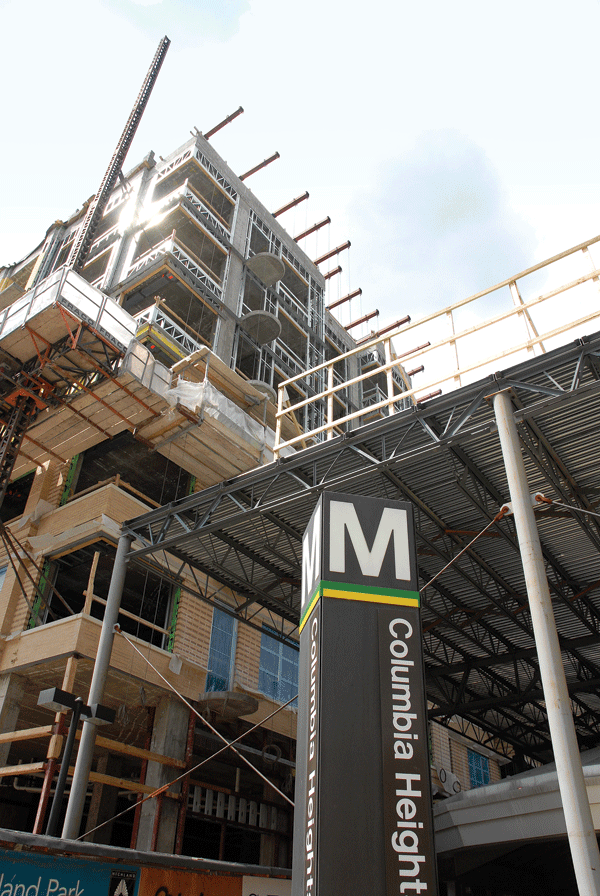 the region needs will require an unequivocal commitment of additional resources from internal and external stakeholders. Simply put, the rehabilitation work being accomplished at the time of the writing of this document will not be nearly enough to keep up with the region’s needs, and without additional resources it will be unlikely that the region can continue to enjoy a transit network that contributes to competitiveness and makes the Washington metropolitan area one of the most desirable places to live and work.
the region needs will require an unequivocal commitment of additional resources from internal and external stakeholders. Simply put, the rehabilitation work being accomplished at the time of the writing of this document will not be nearly enough to keep up with the region’s needs, and without additional resources it will be unlikely that the region can continue to enjoy a transit network that contributes to competitiveness and makes the Washington metropolitan area one of the most desirable places to live and work.
Metro – Doing Business Differently
Metro recognizes that rebuilding the region’s transit system also means rebuilding the region’s transit authority – and will continue to be hard at work on this task in preparation for the implementation of Momentum. In the near term this means revamping nuts and bolts elements of the authority, including but not limited to: identifying ways that Metro can do its job more efficiently while increasing performance; evaluating its contracting and procurement philosophy to emphasize lifecycle contract and asset management; engineering a budgeting process that allows Departments to strive to achieve the goals of Momentum within the context of tight fiscal and financial discipline; and a human capital strategy that must have the right talent in-place and in-queue. In the long term, this means completing the journey to a much more business-like operating and execution philosophy for the organization.
Adding special types of tracks at key locations in the system will provide more flexibility to the overall system.
- Pocket tracks: allow trains to turn back in the direction from which they came (short-lining), gap trains to be stored until placed in revenue service, and the staging of track equipment until nighttime trackwork
- Crossovers: allow trains to single track during incidents or nighttime trackwork
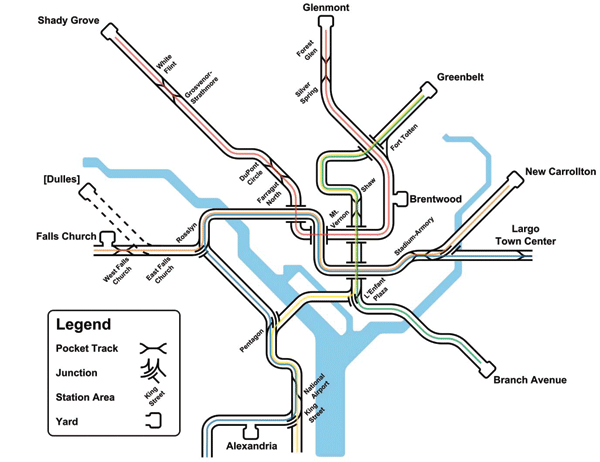 Purpose and Need
Purpose and Need
The Metrorail system includes various single- and double-crossovers and additional ones will shorten the distance of single tracking. The system also has seven mid-route turnbacks, each of which is configured to operate as a third or “pocket” track capable of storing an eight-car train. To improve efficiency and reduce operating costs, certain lines could utilize a pocket track for a “short-lining” turnback to provide improved service to the highest-demand segments of the line. Other new pocket tracks would allow for storage of gap trains, disabled trains and track equipment. Read more…
Like many of the nation’s transit 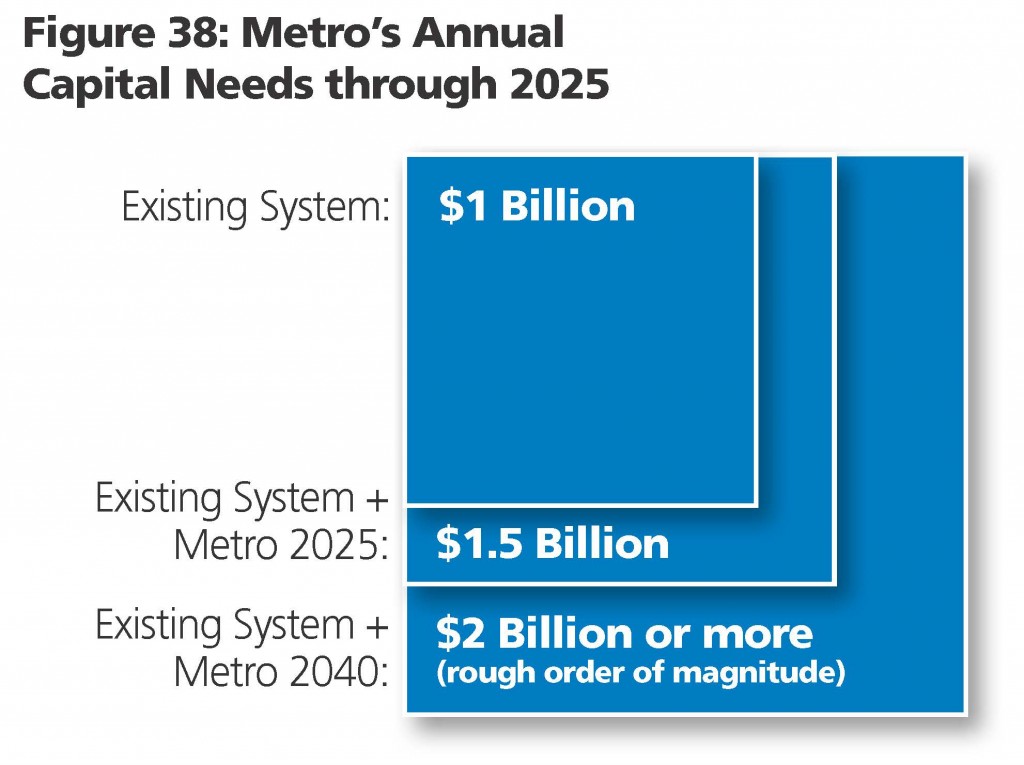 agencies, Metro must rebuild its once-new capital assets as they wear down and deteriorate after decades of use. Metro could feasibly use every penny in its capital budget for years to come just reducing its backlog of maintenance issues. Moreover, Metro also needs to ensure that the system is able to overcome the capacity constraints that come with a regional population expected to swell in both the central core and the suburbs in the years ahead. And on top of this, Metro will need to address calls for entirely new service in many areas of the region. Once Metro is rehabilitated, the system will require a stable level of investment to maintain a state of good repair as it continues to age and deteriorate. Metro estimates that $1 billion (in 2012 dollars) per year is necessary to support and maintain the existing system, even after rehabilitation. Metro 2025 will expand the core and system capacity, as well as ensure that the region’s capital investments are successful. This requires an additional $500 million, on average, in annual capital funding through 2025.
agencies, Metro must rebuild its once-new capital assets as they wear down and deteriorate after decades of use. Metro could feasibly use every penny in its capital budget for years to come just reducing its backlog of maintenance issues. Moreover, Metro also needs to ensure that the system is able to overcome the capacity constraints that come with a regional population expected to swell in both the central core and the suburbs in the years ahead. And on top of this, Metro will need to address calls for entirely new service in many areas of the region. Once Metro is rehabilitated, the system will require a stable level of investment to maintain a state of good repair as it continues to age and deteriorate. Metro estimates that $1 billion (in 2012 dollars) per year is necessary to support and maintain the existing system, even after rehabilitation. Metro 2025 will expand the core and system capacity, as well as ensure that the region’s capital investments are successful. This requires an additional $500 million, on average, in annual capital funding through 2025.
Certainly, increases in the overall size and scope of the system will also have an impact on operating costs, which would grow to some degree when new rail cars, buses, and service are put in place. These operating costs may grow in line with the proportional size of system expansion or at a lower rate, especially if increases in reliability and the increased attractiveness of transit to today’s non-riders has a disproportionate effect on ridership, mode choice, and revenues for modes that have high farebox recovery ratios today and/or where existing demand is already delivering more revenue than operating costs.
Read more…
Business leaders were asked a series of questions about Momentum to gauge the extent that they believe the strategic plan is focused in the right direction. Five different growth options were presented and respondents were asked their level of support for each of them. The options included:
- Running all eight-car trains;
- Installing bus-only lanes as well as other bypass measures;
- Improving stations via widening platforms, more escalators/elevators, pedestrian tunnels;
- Improving communications infrastructure at stations, bus stops, online & fare payment; and
- Relieving track and station congestion at Rosslyn with new infrastructure.
There was clear support for the eight-car trains, with three out of four business leaders choosing this as a priority. Improved communications was also supported by six out of ten surveyed. The rest of the improvements had support from approximately one half of the total respondents. Read more…
Read more…
Portions of Momentum are 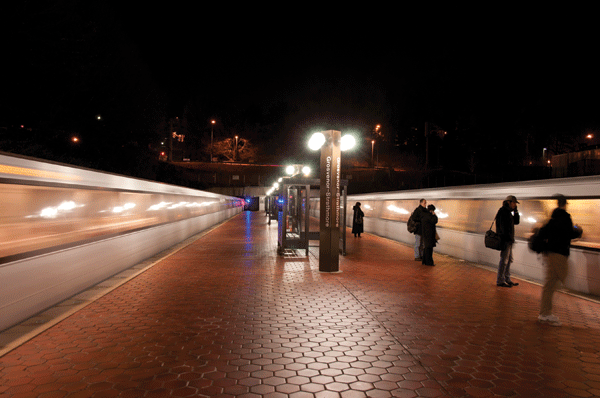 already being executed, meaning that elements in this strategic plan under Metro’s control are already in implementation mode. Engineering work is well-underway to support some of the immediate and near-term investments and innovations to carry the system to the year 2025. Some of the projects and their dates of completion or anticipated completion include the following:
already being executed, meaning that elements in this strategic plan under Metro’s control are already in implementation mode. Engineering work is well-underway to support some of the immediate and near-term investments and innovations to carry the system to the year 2025. Some of the projects and their dates of completion or anticipated completion include the following:
Metro’s staff and Board are already laying the financial underpinnings to execute the strategic plan. In 2013, the Board approved Metro’s multi-year capital and operating budgets. While continuing laser-like focus on safety improvements and the rebuilding of the existing system, the FY 2014-2019 Capital Improvement Program (CIP) includes a number of significant investments that lay the groundwork for the implementation and execution of Metro 2025, which is described in the following section and later in this document.
Read more…
Metrobus needs to accommodate growth 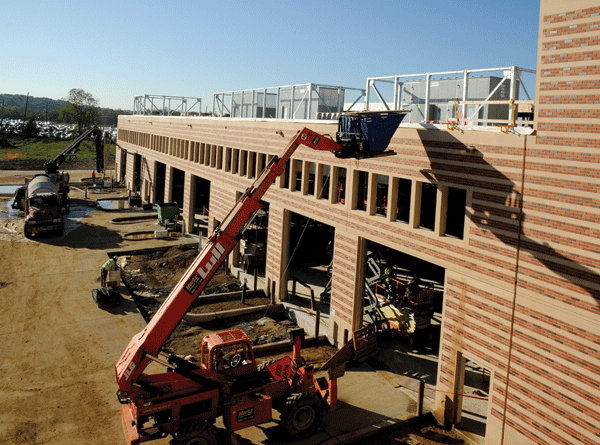 in demand for bus service. Simultaneously, service effectiveness and reliability are suffering due to increasing traffic congestion. In order to meet this challenge, Metro requires 400 new buses by 2025 in addition to those needed for service on the Priority Corridor Network (PCN). Between PCN implementation and service expansion on “Emerging Corridors”, a bus fleet of 2,060 is required by 2025. To support this fleet, an additional 250-space bus garage will be needed along with heavy overhaul capacity expansion from 100 to 150 buses/year.
in demand for bus service. Simultaneously, service effectiveness and reliability are suffering due to increasing traffic congestion. In order to meet this challenge, Metro requires 400 new buses by 2025 in addition to those needed for service on the Priority Corridor Network (PCN). Between PCN implementation and service expansion on “Emerging Corridors”, a bus fleet of 2,060 is required by 2025. To support this fleet, an additional 250-space bus garage will be needed along with heavy overhaul capacity expansion from 100 to 150 buses/year.
Read more…













Recent Comments